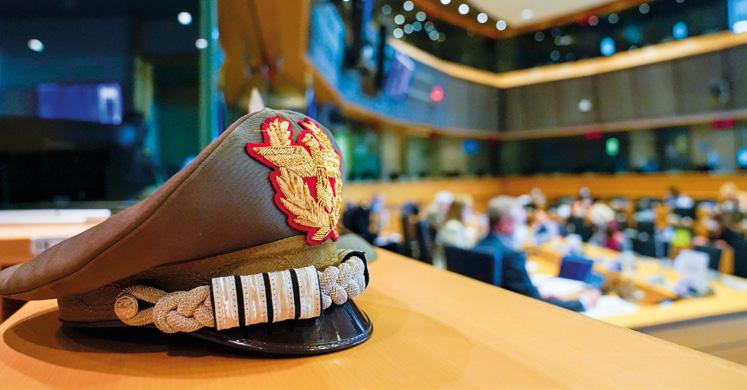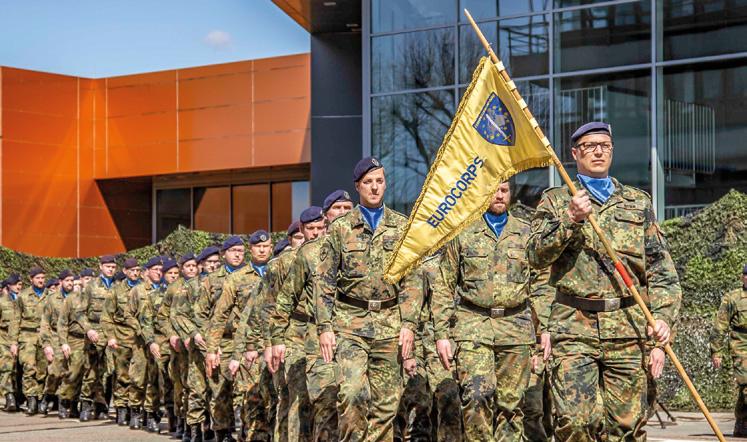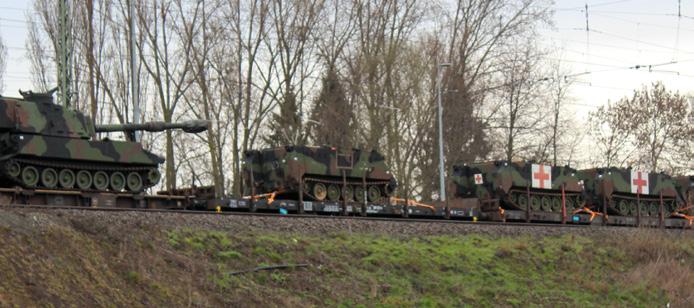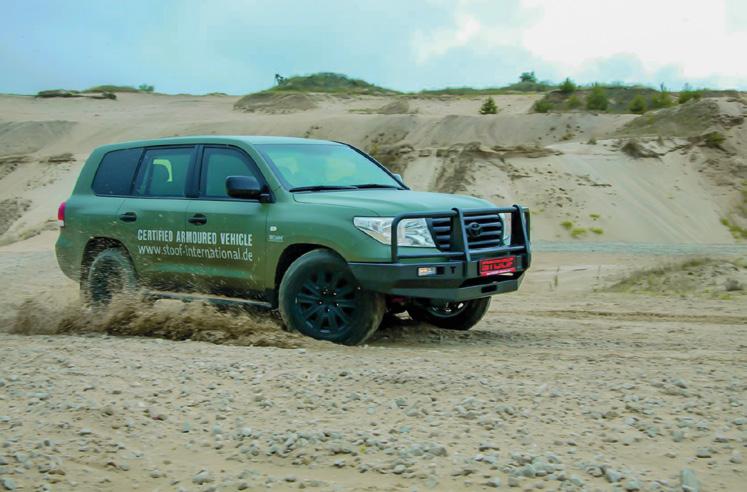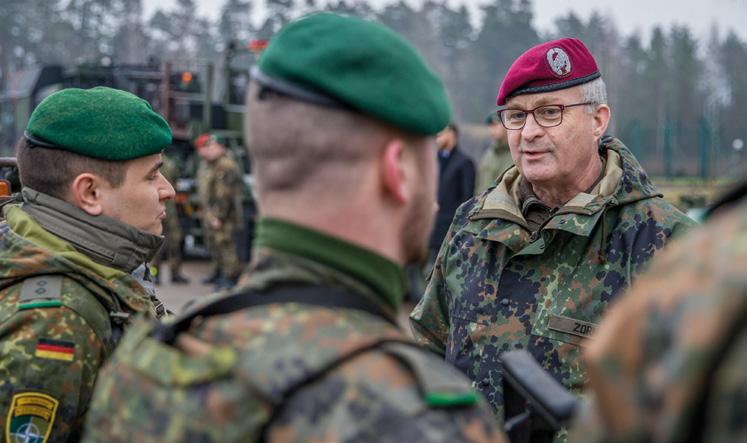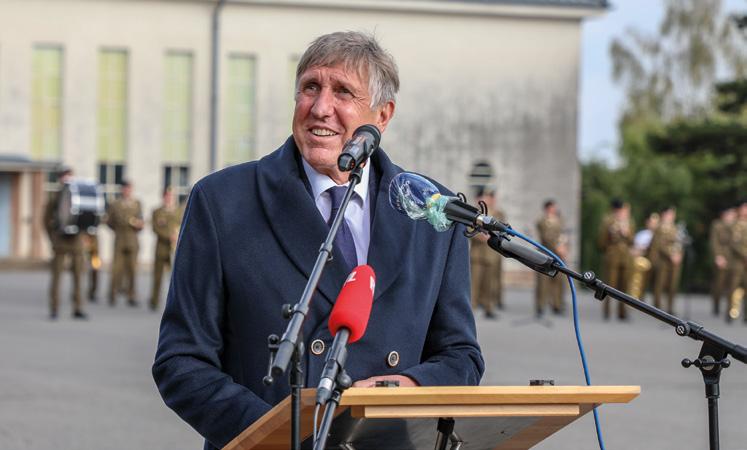
7 minute read
Hartmut Bühl, Paris The Common Annual Review on Defence (CARD) New opportunities for the European defence landscape
The Coordinated Annual Review on Defence (CARD)
New opportunities to overcome the fragmented European defence landscape
by Hartmut Bühl, Publisher, Paris
CARD was initiated by the Council through the Implementation Plan on Security and Defence (IPSD) in November 2016. Four years later, on 20th November 2020, the European Defence Agency (EDA) presented EDA defence ministers the first CARD report developed in close cooperation with the European External Action Service (EEAS) and the EU Military Staff (EUMS). A report full of innovations and actionable recommendations. The High Representative/Vice-President Josep Borrell, chairing the EDA meeting, concluded: “For the first time, we have a unique overview of all 26 EDA Member States’ national defence planning and capability development efforts. This is the result of in-depth dialogue with national defence planners at EU level”. Let’s take stock!
My following analysis of CARD is based on the transparency provided by the EDA during intense discussions in the last weeks with the agency’s CAP Director, Brigadier General Martin Konertz, who is doing a great job with his team: innovative, open for compromise, pragmatic, building confidence and always with the objective in mind! I also had a discussion at the beginning of November 2020 with the CEO of the EDA, Jirˇ í Šedivý who showed a certain optimism that defence ministers will follow the proposals, notably in the three fields of defence spending, defence planning and defence cooperation, the very auspicious pillar. At the end of our discussion Šedivý said: “It is important that the Union shows its profile, ambitious and solid in defence and open to cooperate with NATO. It is up to us to show the US that Europe is cooperable”.
The 6 CARD Focus Areas
Main Battle Tank (MBT) CARD recommends the joint development and acquisition of a next generation MBT in the long term (entry into service mid-2030s), and joint modernisation and upgrades of existing capabilities in the short-term. If Member States cooperate in upgrading or collaborate when introducing new ones, a reduction of types and variants by 30% by the mid-2030s can be obtained. 11 countries expressed an interest in cooperation going forward. European Patrol Class Surface Ship CARD recommends replacing coastal and offshore patrol vessels within the next decade and develop an EU-wide approach for modular naval platforms. Opportunities for cooperation in joint off-the-shelf procurement, common logistics for similar vessels, common future functional requirements were found with 7 countries expressing an interest in cooperation. Solider Systems CARD recommends modernising soldier systems through joint procurement of existing systems in the short term, including harmonising requirements, developing a user group for Joint Virtual Training & Exercises utilising common IT tools. In the long-term develop commonly shared architecture by mid-2020s for all subsystems using cutting edge technology. 10 countries expressed an interest in cooperation going forward.
Photo: © zhelunovych And indeed, the Union showed this profile. Let’s have a look at the process which led to the CARD report. What is the innovative character of CARD? CARD’s innovative character can be described in three fields: 1. A structured in-depth dialogue with national defence planners at the EU level. It has been conducted in bilateral dialogues, identifying common planning objectives and focus areas for collaborative opportunities for future action and investment in capability development, Research and Technology (R&T) and the operational dimension. 2. A comprehensive review and analysis of the European defence landscape across 26 participating Member States (pMS). This represents a 360-degree analysis of Member States’ efforts in defence spending, defence planning and defence cooperation trends across all planning horizons, from short to long term. “It is important that the Union shows its profile, ambitious and solid in defence and open to cooperate with NATO. It is up to us to show to the US that Europe is co-operable.”
Jiří Šedivý, EDA Chief Executive 3. A comprehensive set of recommendations on how to move from loose ad-hoc cooperation to truly enable permanent and structured cooperation and provide Member States with a systematic, transparent and pragmatic approach for Permanent Structured Cooperation (PESCO) but also the European Defence Fund (EDF).
What are CARD’s results and recommendations? CARD analyses showed that • the national defence interest remains the prime reference for participating Member States’ (pMS) future defence plans and determines national defence spending, the size and shape of national capability profiles and defence related activities, including the approach towards defence cooperation and the openness to European defence initiatives.
→ Continued on page 32
Counter UAS/ A2AD CARD recommends developing a European capability to counter unmanned aerial systems (UAS) to improve force protection as well as contributing to establish a European standard for Anti-Access/Area-Denial (A2AD). CARD concludes that European capability approaches towards A2/AD are clearly at a crossroads, whereby the capability is either developed in a collaborative manner or the capability will not be developed for European forces. Defence in Space CARD recommends developing a European approach to defence in space to improve access to space services and protection of space-based assets. As an emerging operational domain, more collaboration would contribute to a greater involvement of Ministries of Defence and recognition of military requirements in wider space programmes conducted at EU level. Enhanced Military Mobility CARD recommends more active participation of all Member States in military mobility programmes, notably air and sea lift transportation, logistic facilities and increased resilience of related IT systems and processed under hybrid warfare conditions by the mid-2020s.
Source: EDA
the European defence landscape consequently continues to be fragmented and lacks coherence in several aspects. The existing capabilities are characterised by a high diversity of types in major equipment and different levels of modernisation and of interoperability, including logistic systems and supply chains.
CARD recommends that the de-fragmentation of the European defence landscape requires coordinated and continuous efforts among pMS over a long period of time in three major areas which are interlinked to the agreed EU Capability Development Priorities: • Defence spending, for which the positive trend of increasing budgets is recommended.
Defence planning, for which it is essential that pMS acknowledge the coherence of the European capability landscape as the overarching EU principle to guide defence capability development in terms of commonality and compatible levels of modernisation and innovation.
Defence cooperation within the European defence initiatives, including PESCO and EDF to lead to more substantial interaction among participating pMS, including dedicated projects in the PESCO framework.
CARD urges that pMS continue to consolidate their national capability profiles until the mid-2020s. The use of identified collaborative opportunities should be increased step by step in this period.
CARD identified the most promising, needed or pressing projects, also in terms of operational value. It recommends: before the defence ministers’ meeting
The European: Bilateral dialogues with Member States (MS) are a key element of CARD.
Do you still see reservations to the CARD process of participating MS which are called to be more NATO minded than others?
Martin Konertz: The bilateral dialogues were an outstanding experience. Of course, MS have their preferences and orientations. But they are all members of the EU and its defence dimension.
And this entails the recent EU defence initiatives. My takeaway is that all MS appreciate to receive an unfettered overview on the European defence landscape through
CARD, including also unfettered advice on options of how to proceed for further improvements. 55 concrete collaborative opportunities in capability development to be considered by Member States, 56 identified options to cooperate in R&T, notably in the PESCO context. CARD recommends that Member States concentrate capability development efforts on next generation capabilities, including at system and subsystem level, and jointly prepare the future investments within 6 focus areas, as part of the EU Capability Development Priorities (ECDP) agreed in 2018: main battle tanks, soldier systems, patrol class surface ships, counter unmanned arial systems defence in space, and enhanced military mobility.
The nations’ new will for progress
My conclusion is that in this is vein, it should be possible to achieve a joint preparation of the next planning horizon for post-2025, to adapt nations’ defence planning in realistic steps over time, and to improve the overall coherence of the European capability landscape. To me, the magic word seems to be ‘realistic’. I detect that Member States are looking for progress, but that can only be achieved if the EU defence initiatives are systematically considered, related to prioritisation and implementation tools in the national defence planning processes. I am convinced that it is also valuable for the operational dimension to facilitate the closure of gaps in all domains of forces, to increase the joint development of capabilities and to strengthen the availability of deployable and interoperable forces for the Union.
Questions to Brigadier General Martin Konertz, Director CAP (Capabilities, Armament and Planning) at the European Defence Agency (EDA) in the days
video: www.youtube.com/watch?v=mb9Y2XVs_l4
The European: Defence initiatives are too recent to already deliver a significant and positive effect. Which field will show progress first?
Martin Konertz: De-fragmentation is a task which will accompany us for a long period of time in all
areas: defence spending, planning and cooper-
Photo: Hartmut Bühl ation. Keeping the political momentum behind
the EU defence initiatives is key to success. This would encourage national defence planners to make the best use of these initiatives and apply the related prioritisation and implementation tools in their national defence planning processes more systematically. Operational commitments could largely benefit, if MS could decide to make their already existing forces available to operational engagement.

